How Sustainable is Animal-Free Dairy?

The precision fermentation sector has raised about $3.7B in total funding, with over $840M coming in just last year, according to industry think tank the Good Food Institute, which refers to it as the third pillar of alternative protein. It’s a fast-growing sector – and one of its primary focuses is creating environmentally-friendlier alternatives to dairy.
The technology has been around for over 30 years but came into the spotlight after alt-dairy startups like Perfect Day burst onto the scene. In terms of animal-free milk, precision fermentation involves producing molecular identical dairy proteins like casein or whey by encoding milk protein DNA sequences into microorganisms like yeast or fungi. These are then fermented with nutrients and sugar in tanks akin to those that use beer.
These microbes then produce proteins that are identical to traditional dairy proteins, which are then filtered into a pure milk protein isolate that can be used to create dairy products like cheese, yoghurt and ice cream without any animals. The animal welfare angle aside, there are numerous advantages of precision-fermented dairy, which is said to have a fraction of the carbon emissions and use much less land and water than conventional dairy.
While precision-fermented dairy makes up a fraction of the overall dairy sector, there is precedent for its future success. Insulin for diabetics used to be made from cow and pig pancreas, with the process requiring 50,000 slaughtered animals to produce just 1kg of the hormone. But now, 99% of the global insulin supply is made using precision fermentation. Meanwhile, 80% of the world’s rennet – a crucial ingredient for many cheeses that used to be exclusively sourced from the stomach lining of young cows and sheep – is made using this tech.
Perfect Day & Bon Vivant’s precision fermentation LCAs Courtesy: Perfect Day
Courtesy: Perfect Day
So how does the data stack up for alt-dairy? That’s what certain companies and scientists have tried to measure. Perfect Day – the Californian precision fermentation dairy pioneer – is one of them, conducting a life cycle assessment (LCA) of its whey in 2021 to measure its ecological impact. The goal was to find out the greenhouse gas emissions, energy demand and water consumption of precision-fermented dairy, and how that compares with traditional bovine milk.
Perfect Day’s ISO standard-reviewed LCA found that the company’s animal-free whey has 91-97% lower greenhouse gas (GHG) emissions, 29-60% lower energy demands, and 96-99% of water consumption than conventional whey protein. To put this into context, if all Americans switched to its whey, it would save up to 246 million tons of CO2e in emissions – that’s equal to 28 million households’ annual energy use (all New York and Californian homes combined), or up to 53 million passenger vehicles driven for a year (all the cars in New York, California, Texas and Florida combined).
 Courtesy: Perfect Day
Courtesy: Perfect Day
Additionally, it would save the amount of water needed by 187 billion people for daily indoor home use. If the US continues its current consumption rate of traditional dairy, it would require 32% of the total lighting energy consumed by the country’s residential and commercial sectors.
As for its own GHG emissions, the biggest factor is the utilities, accounting for 40% of Perfect Day’s total emissions. The company says utilities are the largest contributor to GHG emissions, owing to the composition of the US electric grid, which primarily comprises coal (31%) and natural gas (33%).
Developing its fermented whey makes up 25% of the emissions, many due to the production of glucose via starch hydrolysis (which is responsible for 83% of these protein development emissions). Utilities and glucose production are also the primary causes of energy and water use, respectively.
So, what’s the verdict? Precision fermentation dairy vs. conventional dairy
All the LCAs reviewed have consistent results, though with some variance: producing dairy proteins using precision fermentation is lower in GHG emissions than conventional dairy, particularly if the energy sources used were renewable. Meanwhile, dairy’s externalised costs go beyond GHG emissions: these include heavy antibiotic use in animals (which increases human superbug resistance risk), excess growth hormone use (which has been linked by researchers to a rise in certain cancers), land footprint, and animal cruelty (dairy cows are forcibly impregnated so they can keep on producing milk).
Water usage is a serious problem for the industry too. California is currently facing droughts and water shortages (and the US is running out of groundwater), with the state’s large dairy industry partially responsible. The latter accounts for more than its fair share of methane emissions too.
Precision fermentation dairy is undoubtedly an alternative to all of these issues. Given our growing global appetite for dairy products, especially in highly populated countries like China, and given that livestock animal agriculture accounts for between 11% and 19% of all GHG emissions, it seems reasonable to continue investing in this alternative way to produce dairy proteins.

